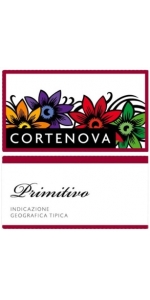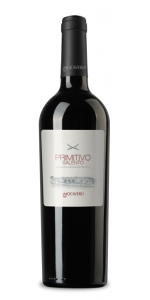Primitivo

Primitivo is a red grape that was originally planted in southern Italy, notably in Puglia. The robust and rustic spicy black and fruity notes of Primitivo thrive in the warmest climates, and will achieve extremely high alcohol levels. Most people believe that Pimitivo and Zinfandel is the same grape and actually, they are genetically similar although it took some detective work and DNA fingerprinting to figure that out. Zinfandel and Primitivo are closes of the Croatian grape that is called Crljenak. Cloning is not a bad thing when it comes to grapes and is merely a genetic subtype that occurs naturally or is gently encouraged by the grower. Grapes are more adaptable than people think and can mutate extremely easily. If a grape grow catches a glimpse of a vine that is preferable for berry size, ripening characteristics and cluster formation, it is easy to graft and cut a clone onto an established vine, which is how the Primitivo red grape was created. Although Zinfandel and Primitivo have been considered by most as synonyms, the United States labeling laws does not allow them to be used interchangeably. That is why you will find Zinfandel and Pimitivo blends in the US.
Cortenova Primitivo is made from 100% Primitivo
The grapes are harvested and immediately pressed at controlled temperature. Fermentation is carried out with maceration on the skins for 10-12 days; daily remontages; malolactic fermentation.
Dark, ruby-red color with violet highlights. Intense and fragrant bouquet with a rich array of red and black fruit aromas and flavors. Harmonious and velvety on the palate. Great balance and structure.
Excellent with grilled or roasted meats, game and cheeses.
Mocavero Primitivo del Salento is 100% Primitivo.
Deep red color with hints of violet, sweet spicy and ripe fruity notes, soft, persistent taste with skilful balanced tannins.
This ancient vine variety requires special attention during vinification to ensure that it expresses all the varietal characteristics, it needs periodic aeration and a particular temperature control. Once maceration is complete, the must is separated from the marc and fermentation ends in stainless steel tanks.Once it has been fermented the wine is refined in american Oak barrels for 3-4 months. When the refining process is complete, the wine is filtered and bottled.
Pairs best with roast meat, wild fowl, cold-cuts and mature cheese.
- back
Selected Options
Grape Types
Categories
Pricing
Countries
Regions
Grape Types
Wineries
Organic/Free Shipping
J. Christopher Appassionata Chardonnay is made from 100 percent Chardonnay.
Appassionata Chardonnay is the expressive summit of this classic Burgundian variety in the Willamette Valley. Fermented and matured in large (500-liter) oak casks, it rests on the full lees for two years before bottling. It then rests in our cellar for another year before its release, three years after vintage. The wine’s elegant texture, fine structure and extended maturation time ensure a long life for this vibrant Chardonnay.
Whole-cluster pressing; native yeast fermentation in 500-liter French oak barrels; natural malolactic fermentation; 21 months maturation on the lees.
Review:
Anyone questioning Chardonnay’s potential in the Willamette Valley should try this rich and sophisticated wine. A silky texture, is met with mouthfilling flavors of orange sorbet, pineapple and challah bread, as well as a hint of mint. The aromas of lemon curd and petrichor are equally delightful.
- Wine Enthusiast 94 Points
The Sonoma Coast bottling is a blend of barrels from Ferren's single vineyard offerings; Lancel Creek, Silver Eagle, Volpert, and Frei Road Vineyards. The wine is always somewhat more approachable early in its life as less new oak is used in the blend. Pure and translucent fruit is the hallmark of this cuvée. Citrus, quince, sea spray, and minerals are buoyed by refreshing acidity and a seamless finish.
12 months in barrel, then 6 months in stainless steel15% new, 85% neutral
Tronçais and Vosges forests
100% 4-year air dry stave wood
100% 228 liter François Frères French oak barrels
Review:
"Succulent and fleshy, with notes of apricot pastry, grilled peach and salted butterscotch, along with fresh acidity, plus details of lemon zest, tangerine and lime sorbet. Fresh ginger and white tea linger on the long, expressive finish alongside a touch of chewy dried mango. Drink now.—M.W.” - Wine Spectator (May 2025), 93 pts






